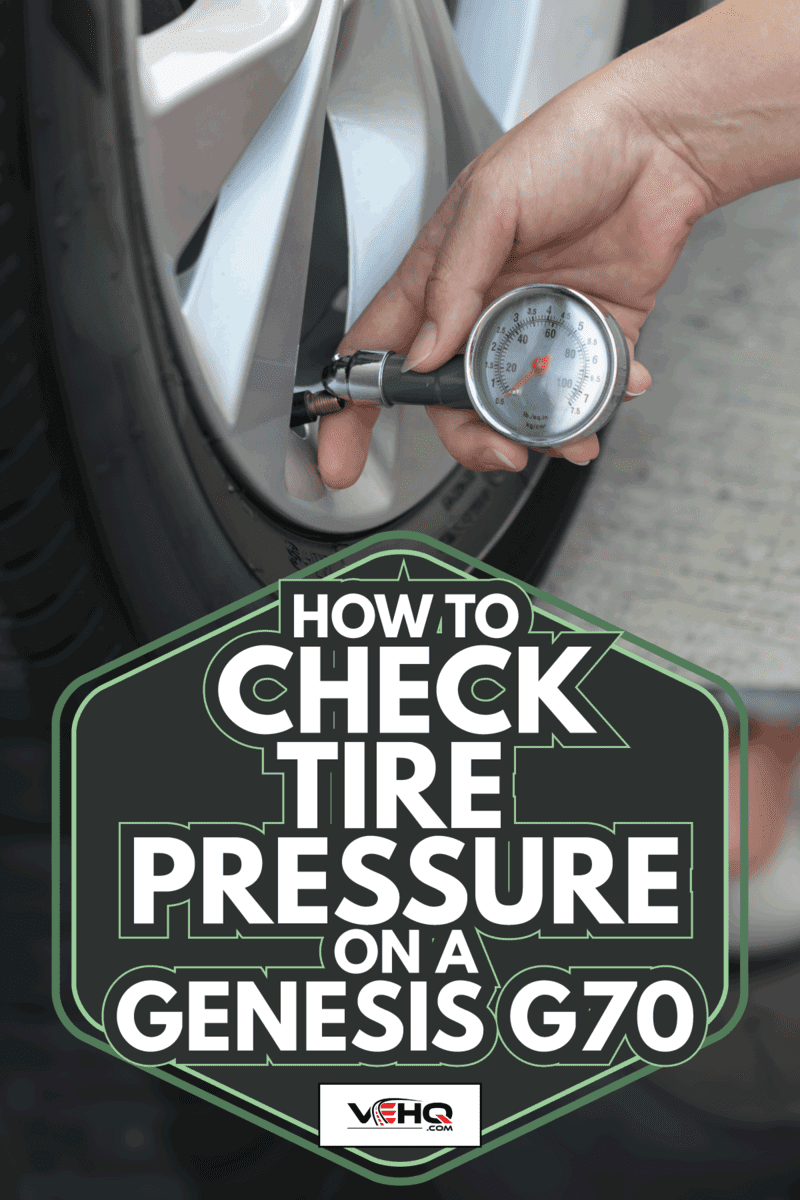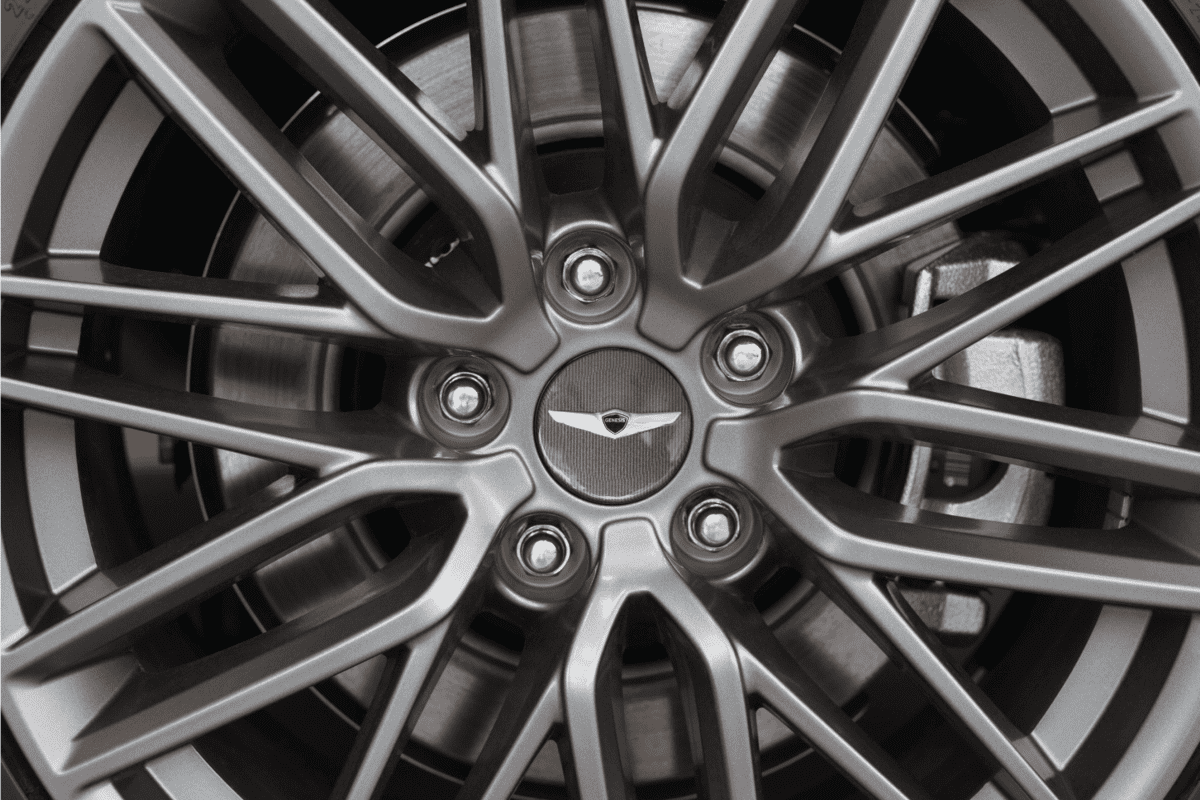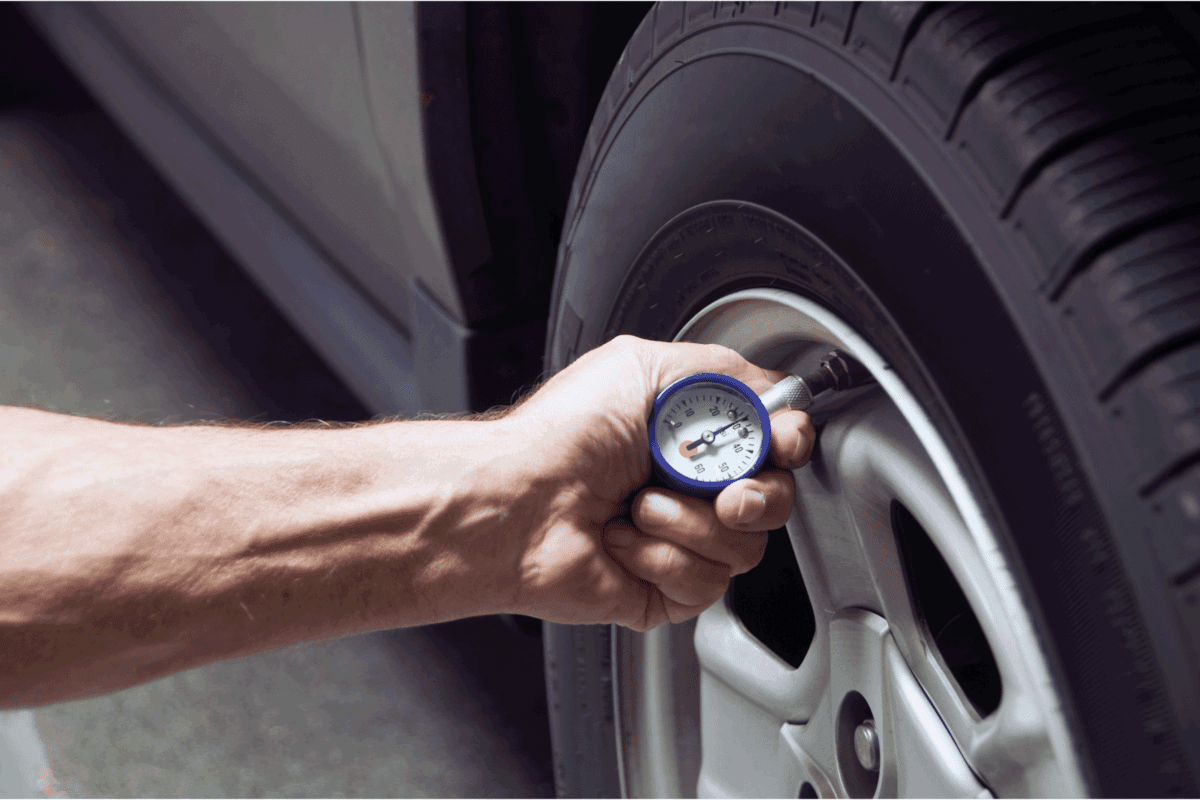The G70 comes from the Korean premium carmaker Genesis. Like relatively any car, G70 users should know how to check the air pressure on their vehicles’ tires to drive safely. Now if you’re not sure about the steps to check the tire pressure on the Genesis G70. We researched for you and here’s what we found.
G70 owners can use the built-in smart tire pressure monitoring system (TPMS) to let the software check for the tire’s air pressure. Manual inspection is also available to those who want to double-check the findings. Checking the tire pressure on a Genesis G70 may require the following steps:
1. Connect a tire pressure-checking device to the tire’s valve. 2. Wait for the tool to show a reading. 3. Adjust the air pressure in the tire based on the displayed findings.
Certain events may occur when the tire pressure readings on certain G70s are incorrect. If so, the system may need a reset or the pressure sensors need replacements. Keep reading as we tackle how to reset or replace tire pressure sensors to ensure your optimal safety while driving a Genesis G70.

What Should The Tire Pressure Be On A Genesis G70?
Correcting the tire pressure on a Genesis G70 requires you to know certain details about your specific vehicle. These include the car model’s year, trim, and tire size. Some of the Genesis G70 models and their required tire pressures include:

- 2021 Genesis G70 (225/45R18/XL 95W tires): Front tires use 36 psi while the rear tires need 39 psi.
- Genesis G70 Advanced (Front tires: 225/40R19 93(Y) XL, Rear tires: 255/35R19 96(Y) XL): Front tires use 38 psi while the rear tires use 36 psi.
- Genesis G70 Dynamic: Front tires use 36 to 38 psi while the rear tires need 36 psi.
Keep in mind that using aftermarket or third-party tires on your Genesis G70 may need different air pressure readings. If so, you should consult the carmaker or the tire manufacturer for the air pressure requirements of their products.

Checking The Tire Pressure On Genesis G70
The correct tire pressure on your Genesis G70 depends on its specific model. After determining that detail, follow these steps to manually check your automobile’s tire pressure:
- Remove the valve caps.
- Connect a tire pressure checker to the valve.
- If overinflated, press the center plunger of the valve stem to normalize the pressure.
- If underinflated, attach an air compressor and blow more air to the tire.
- Recheck all tires on the G70 if they contain the correct air pressure.
To ensure a proper reading on the tire pressure gauge, the G70’s tires should be cold or the car shouldn’t have been driven for the past 3 hours. Moreover, don’t fret if the tire pressure readings on the front and rear tires differ because that’s generally the case for many vehicles.
Take note that the Genesis G70 has a built-in TPMS. You can find this indicator on the automobile's dashboard and near the odometer. It'll light up when one or more of the vehicle's tires become significantly under-inflated.
Check out this air pressure gauge on Amazon.
How Do You Reset The Tire Pressure On A Genesis G70?
In certain cases, the light on the Genesis G70’s TPMS doesn’t go out even when its tires’ air pressure readings are correct. If so, you can reset this service light by following these steps:
- Ignite the car’s engine. If your specific G70 model has a START/STOP button, press that while stepping on the brake pedal.
- Press the gear symbol or the User Settings on the dashboard by maneuvering through the setting using the controls on the steering wheel.
- Scroll until you see SERVICE INTERVAL and press ENTER or hit OK.
- Scroll until you find the RESET function and press ENTER or hit OK.
If the light doesn’t go out after doing those steps, you should have your car’s system checked by an authorized retailer of Genesis products.
Why Is My Low Tire Pressure Light On But Tires Are Fine?
A flashing or steady low tire pressure light means something is amiss with the tires. However, if the light doesn’t turn off and the tires are fine, this system might have encountered an error or malfunction.
You can still drive the car even though this light is flashing or remains steady. However, you should have the tire pressure sensor checked. Have specialized technicians inspect the system if you don’t know how to go through with this operation.
Take note that vehicle owners may still attempt to investigate their car’s tire pressure system if it failed. If you want to go through with this path, here are the steps to complete this task:
- Lift the vehicle using a jack or dolly.
- Dismount each tire from its rims.
- Check for any visible damages on the tire pressure sensors.
- If the pressure sensors don’t seem to have visible damages, you may need to replace one or more sensors.
Additionally, you may need to reprogram or reset your automobile’s TPMS after the reinstallation. Keep in mind that the TPMS may not detect the new sensors if they’re not compatible with the car’s system.
Check out this tire pressure sensor on Amazon.
How Much To Replace A Tire Pressure Sensor?
Vehicle owners should expect to pay around $30 to $800 to replace their cars’ tire pressure sensors. Different factors affect the overhead for the replacement, including the geographic location, sensor model, professional labor, and type of vehicle. The fees can reduce if vehicle owners choose to replace the sensors without expert help.
Other Things To Note When Replacing a Tire Pressure Sensor
Car owners should also think about the following factors when replacing broken or old tire pressure sensors:
- Type of TPMS: Tire pressure sensors usually come in one of two types: direct and indirect. A direct sensor mounts on the wheel whereas an indirect model attaches to the anti-lock brake sensor (ABS).
- The severity of the damage: Minor scratches and dents to sensors might not warrant replacements. But heavy corrosion can cause malfunctions and dire safety issues, requiring complete substitutions.
- Branded or non-branded options: Many original equipment manufacturer (OEM) sensors are usually less expensive than branded options. Interested buyers may find sensors with prices that range from $14 to $18 per wheel.
Check out this tire pressure monitoring system sensor on Amazon.

How Do I Know If My Tire Pressure Sensor Is Bad?
Perhaps the most common indicator of a bad TPMS is incorrect display readings. Some cars will have a warning light that stays on even when the tire pressure is correct. On the other hand, automobiles like the Genesis G70 will have a center console that may show a seemingly everlasting low-pressure warning sign.
Aside from the incorrect dashboard warning, vehicle owners may also find certain faults in their vehicles that indicate a broken or faulty TPMS. These symptoms can include:
Visible Low Air Pressure to the Tires
The main purpose of a TPMS is to alert you when the tire pressure is low. However, the sensor is malfunctioning if one or more tires on your vehicle clearly lack pressure, and the light on the TPMS doesn't give you a clear indication of the matter.
Steering Wheel Jerks
Jerky steering wheels can happen when the front tires of your vehicle are low in air pressure. If you experience these events and the TPMS doesn’t notify you of the situation, you may need to have your tire pressure sensors checked.
Increased Fuel Consumption
Driving with a flat or low-pressure tire can make a car work harder than usual to accelerate. In turn, it causes the vehicle to consume more fuel than average. Have your tire pressure sensors monitored by skilled technicians if driving at cruising speeds seems to consume more fuel than before. You may also use a TPMS scanner before consulting professionals to verify the problem.
Check out this sensor programming tool on Amazon.

Final Thoughts
Genesis G70 users can use their vehicles' TPMS to investigate their tires' air pressure. This feature should function well. However, if it doesn't work as intended, it's still possible to check the tire pressure on the G70 using tire pressure gauges.
Driving without a functioning TPMS can invite various dangers to G70 drivers and passengers. Therefore, if the tire pressure sensors fail, it’s best to have them checked by industry experts. Replacing the sensors can even be the best solution to promote optimal safety during driving.
For more guides about checking the tire pressure on different vehicles, you can read these posts:
What Should The Tire Pressure Be On A Nissan Altima?
What Should Tire Pressure Be On Ford Transit? [Breakdown By Model And Year]




